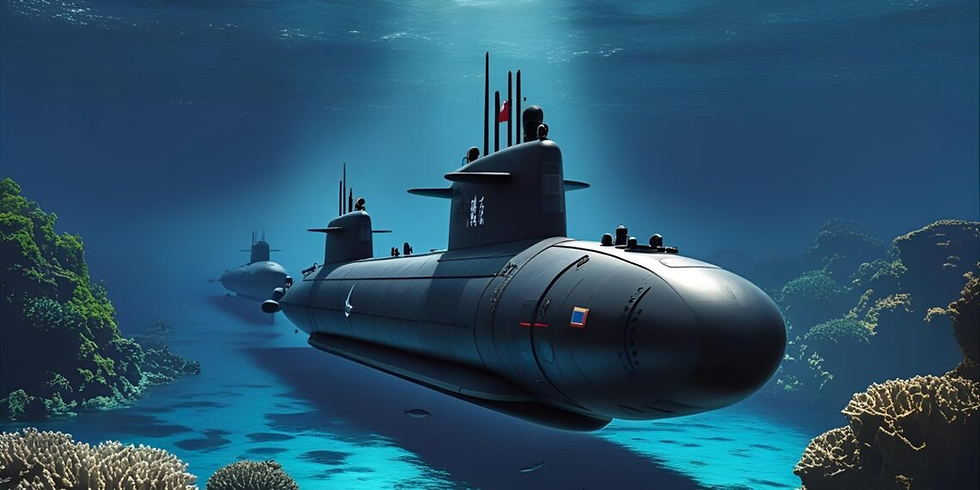OPINION | Why Myanmar’s Chinese-Built Submarines Don’t Hold Their Water Against India’s Kilo-class
- Sep 1, 2025
- 2 min read
by Commodore Ranjit Rai (Retd)

Myanmar’s fledgling submarine fleet consists of two boats: the UMS Minye Theinkhathu, formerly the Indian Navy’s INS Sindhuvir, and the Chinese-built UMS Minye Kyaw Htin, a Type 035B Ming-class submarine transferred from the People’s Liberation Army Navy (PLAN).
On paper, these vessels form a unified force. In reality, there is a gulf in quality between the Indian-origin Kilo-class and China’s older Ming-class.
The Merits of the Kilo-class
The Kilo-class (Project 877EKM) submarines, such as INS Sindhuvir—commissioned into Indian service in 1988—carry a proven pedigree. Displacing around 3,000 tonnes, diving to 300 metres, capable of 18 knots submerged, and operating for up to 45 days, they bring genuine endurance and reach.
Refitted at Hindustan Shipyard Limited (HSL) and handed over to Myanmar on 24 December 2020, the Kilo-class provided Naypyidaw with its first true undersea deterrent.
These boats earned the NATO nickname “Black Holes” for their exceptional stealth. The combination of anechoic tiles, quiet propulsion systems, and advanced sonar countermeasures makes them notoriously difficult to track. While some modern Western submarines with Air Independent Propulsion (AIP) may rival their acoustic discretion, the Kilo-class still enjoys a formidable reputation.
Ming-class: Stuck in the Past
The Type 035B Ming-class tells a different story. Based on the Soviet-era Romeo design, it is an outdated platform dressed up for export. Displacing about 2,100 tonnes with a similar diving depth, it lacks the endurance and stealth of the Kilo-class.
Commissioned into Myanmar’s navy on 24 December 2021, the ex-PLAN submarine retains old diesel-electric systems with limited noise suppression. Assessments consistently rank it among the noisiest submarines still in service, making it vulnerable to modern anti-submarine warfare forces.
Although nominally capable of launching cruise missiles from its torpedo tubes, this “upgrade” is more cosmetic than transformative. In practice, it adds little to operational capability.
Capability or Showpiece?
The Kilo-class Minye Theinkhathu gives Myanmar its only credible undersea weapon: quiet, enduring, and combat-ready. Training support from the Indian Navy further bolsters its value as a functioning deterrent.
The Ming-class Minye Kyaw Htin, by contrast, functions more as a symbol than a weapon. It parades Myanmar’s ties to China but delivers little actual warfighting edge.
Chinese submarine exports often follow this pattern—older hulls, limited after-sales support, and burdensome upkeep. For Myanmar, the Ming-class risks becoming less an asset and more a liability.
Symbolism vs Substance
Myanmar’s submarine force may have doubled in numbers, but not in capability. The Kilo-class remains its only true undersea operator, while the Ming-class is technologically obsolete and strategically shallow.
Ultimately, Beijing’s export of Ming-class submarines looks less like the sharing of capability and more like the offloading of legacy hardware—creating the appearance of power projection while saddling partners with yesterday’s technology.
About Author

Commodore Ranjit B Rai (Retd) is the author of the book ‘The Indian Navy @75: Reminiscing the Voyage. He is an RNSC-qualified officer who served as Director Naval Intelligence and Director Naval Operations and writes on maritime matters. He also served as India Representative of Waterman Steam Ships USA and curated a New Delhi Maritime Museum.




Comments